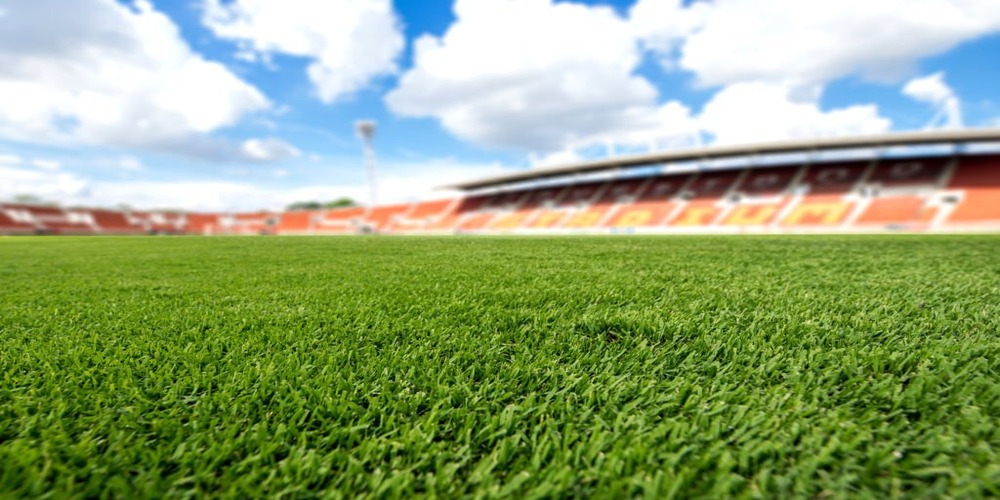Grass is a great material for football fields and is easy to maintain. Football grass is your best bet if you're like me and prefer to avoid synthetic materials whenever possible.
Bermuda — a warm-season grass most commonly found in the southern United States — is often used for football fields.
Bermuda grass is a warm-season grass that grows well in the southern United States. Bermuda grass is most commonly found in the southern United States, as it thrives best in warmer climates.
While it’s not necessarily a good choice for other sports, football fields are often lined with Bermuda grass because:
- Its roots are shallow and don't get too deep into the soil, making it easier to maintain
- It is resistant to wear and tear caused by heavy foot traffic
Cool-season grasses are a better fit for northern United States climates and can also be used for football fields.
Cool-season grasses are a better fit for northern United States climates and can also be used for football fields. Cool-season grasses have different growing requirements than warm-season grasses, which grow faster and are more susceptible to frost damage. Cool-season grasses, such as bluegrass or fescue varieties, tend to be more durable and require less maintenance than their warm-weather counterparts.
The grass is the most natural playing surface.
The grass is the most common playing surface in the United States and is also the most natural. Our bodies have evolved over millions of years to thrive with grass as our primary environment, unlike artificial surfaces made of rubber or plastic, which can cause injuries if your body isn't used to them. Grass allows us to move more naturally because it's soft enough to fall on without hurting us too much.
We can run faster and jump higher on grass because we don't have to worry about getting injured by sharp edges or slippery surfaces like you might find on an artificial surface such as concrete or asphalt. The only thing that has changed since ancient times is how we play football: whereas humans used rocks as their main source of ammunition back then ("rockets," if you will), today's modern game requires fancy equipment such as footballs instead!
Grass takes care of itself and needs no maintenance apart from mowing it once every couple of weeks.
- Mow the grass with a push mower.
- Fertilize with a spreader.
- Water it with a sprinkler or hose if you have one nearby.
- Aerate using a core aerator (this is optional, but you'll love the results).
Use grass as a playing surface, which will take care of itself.
The football grass is a great playing surface because it takes care of itself. You don’t have to worry about watering it or blowing leaves off the pitch; you can focus on enjoying your game. Unlike synthetic surfaces that need regular cleaning and maintenance, grass pitches require no upkeep – they take care of themselves!
A natural playing surface also encourages better movement by players on both sides of the ball, which is why many professional football clubs use natural grass as their preferred pitch surface. The beautiful green coloring helps spectators feel like they’re watching their team play at home; after all, who wouldn’t want to watch their favorite team play in front of them?
Conclusion
The grass is the best playing surface, especially in colder climates. You only have to mow it once every couple of weeks and water it occasionally if there’s not enough rain. Grass takes care of itself, so all you have to do is enjoy watching your kids play soccer on their beautiful new field!


